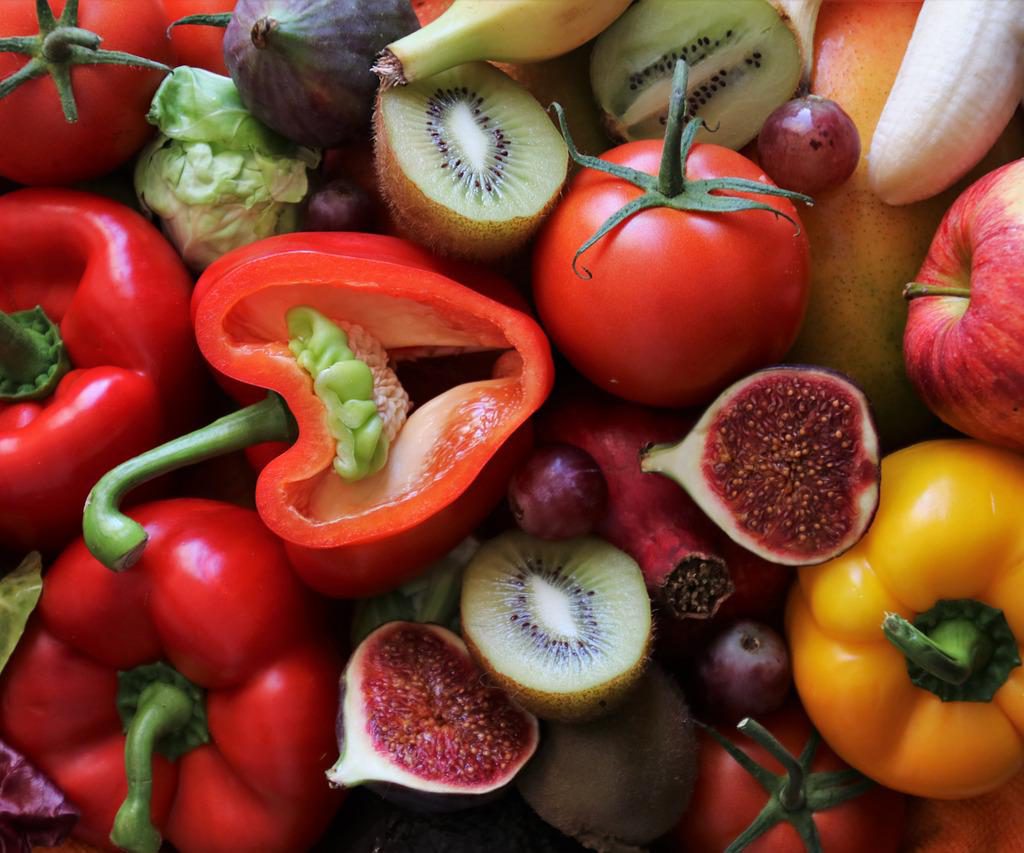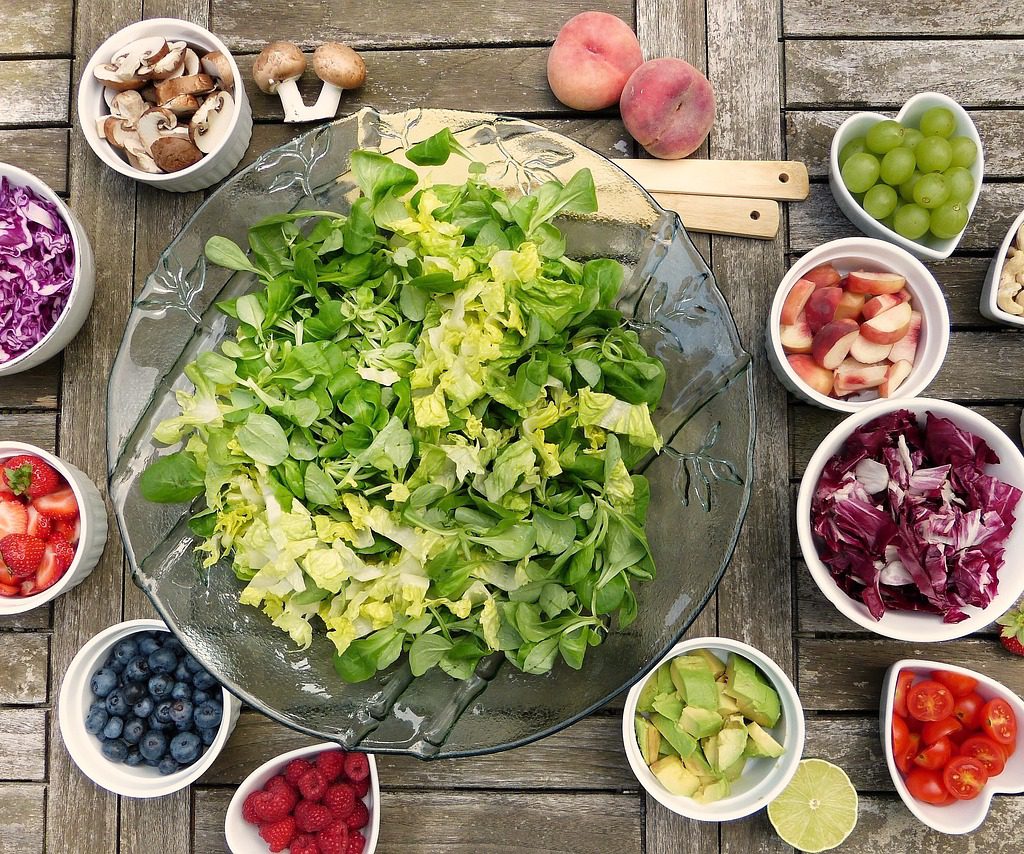Last Updated on December 29, 2022
If your salads are too dry, you might have a problem that needs addressing. We should probably cut back on the puns, but we can’t fail to notice the uncanny resemblance between dad jokes and salads. They both make people smile uncomfortably out of politeness, while children roll their eyes in disapproval. But does it have to be that way? Do salads really have to be boring?
Of course not! You only need the proper formula to make a foolproof salad. Top that with an exciting dressing, and voila, you’ll have a knockout salad every time. Keep reading for the best salad tips!
Get the Freshest Produce
It’s easy to spice things up and blend the wilted herbs and vegetables in a stew. You can make a great casserole out of leftovers that’ll otherwise be discarded soon. But try hiding a not-so-fresh ingredient in a salad, and 9 out of 10 times, you’ll fail.
To get the freshest produce, head to the farmers market, unless you’re growing some vegetables yourself because by the time perishables like lettuce, parsley, and other herbs hit the grocery store or the supermarket’s shelves, they’ve already made a long trip.
Plus, almost every time you go to a regular grocery store, you get the exact same ingredients: lettuce, arugula, romaine, and a spring mix, if you’re lucky. Another reason to go to the farmers market is the variety of greens there that could help you get creative with your salads.
Maintain the Freshness of the Produce
Try as you might, it’s hard to visit the farmers market more than once a week. This means that if you don’t look after them, you might end up with wilted ingredients by the end of the week.
Read our guide on how to store your vegetables right to learn all the secrets and avoid throwing wilted perishables away to reduce your waste in the kitchen.
When it comes to greens, you can wash them, dry them with a salad spinner if you have one, or give them a good rinse before you let them drain and air dry and place them in an airtight container with a paper towel at the bottom. The paper towel soaks up any excess moisture, which is essential for a perky leaf of lettuce or any other green. If you store them without drying them properly, the excess moisture will quickly wilt them.
Choose the Ingredients Wisely
Picking ingredients for a healthy salad is easy, and you can alternate them as they come in season. The most common ones are tomatoes, peppers, cucumbers, onions, celery, radishes, and of course, lettuce. But there are many other greens you can make a salad base with, like bibb, kale, or spinach.
Another important thing to consider while choosing the ingredients to throw in the mixing bowl is the variety of textures. Combining dry, wet, tender, and chewy ingredients will make the salad much more interesting. And, of course, colors. Try adding carrots, berries, or even edible flowers!
One of the best things about salads is that they can be turned into a main course by adding some carbohydrates and proteins, such as noodles, roasted meats, boiled or steamed legumes, grains, beans, sprouts, nuts, and seeds.
Once you pick your ingredients, it’s time to chop them into the perfect size.
Perfect Your Chopping Technique
The size of your chopped ingredients changes the overall texture and feel of the salad and definitely affects the taste. There aren’t any strict rules to follow, but generally, you don’t want to cram big chunks into your mouth. At the same time, the ingredients should be big enough to carry the dressing nicely.
Chopping the leaves and vegetables is straightforward, but you can decide between chopping, peeling, or grating the root vegetables.
Prepare a Killer Salad Dressing
The perfect salad dressing needs balanced flavors. You need a base flavor, aromatics, secondary flavors, acid, and oil. Let’s go through some tips on how to step up your dressing game.
How to Mix the Perfect Salad Dressing

You can also use a food processor if you’re cooking for a bunch of people, but crushing the ingredients also adds some interesting texture as it bursts open the individual cells. It requires some elbow grease, but it’s definitely worth the effort.
Now, what’s the difference between aroma and flavor? We’ve gone through that in our guide on the many ways of grinding spices in detail, but in a nutshell, aroma is what we sense through our noses, and flavor is what we sense through our tongues. Combined, they bring up the taste.
Base Flavor
The base flavor stands for the base of the dressing. It’s the most prominent flavor, and you should try to build the other flavors around it. For the base, you can use soaked nuts, sundried tomatoes or peppers, miso paste, tahini, sour cream, ginger, or even anchovy fillets.
Aromatics
Once you decide on the base flavor, you need to pick aromatics. For that, look for vegetables, herbs, and spices that deliver a deep and rounded flavor when you heat or crush them. For instance, garlic is the most well-known and perhaps most used aromatic around the world. Other than that, vegetables like onions, shallots, ginger, leek, or even carrots can be used too.
There are also herb aromatics like basil, mint, dill, parsley, chives, cilantro, rosemary, oregano, fennel, or lemongrass.
You can also use spices as aromatics like chili peppers, coriander, turmeric, cumin, cardamom, or paprika. For the ultimate deliciousness, make sure to grind them fresh.
And lastly, you can use different oils to give your salad dressing an extra layer of rich aroma, such as sesame oil, almond oil, walnut oil, avocado oil, and of course, extra virgin olive oil.
Secondary Flavors
Secondary flavors are those you build around your base flavor, but they are not essential for a really good salad dressing. So if you can’t think of anything that’ll complement your base flavor, you don’t need to try hard to add another layer to the dressing. But if you can, it’s an opportunity to add depth and complexity to the sauce.
Because secondary flavors won’t be as prominent as the base flavor, you can go for bold choices like sweet or spicy (e.g., honey, pureed dates, maple syrup, molasses, smoked paprika, chili paste, soy sauce, or mustard). All these ingredients have a distinct kick in their taste profile, and it’s all about making them work with your base flavor. For that reason, think outside the box. The world is your oyster! Speaking of which, try adding oyster sauce to your salad and thank us later.
Acid
Acid might not be something delicious on its own, but it is mandatory in cooking as it carries the flavors to a different level. You sure wouldn’t dare to serve a bowl of salad without drizzling it with some sort of acid, would you? You can use citrus juices like lime juice, lemon juice, or even orange juice if you feel especially excentric that day.
Vinegar is another go-to acid. You can use rice vinegar, wine vinegar, white wine vinegar, cider vinegar, or sherry vinegar for some more complex, nutty flavors.
Another way to add acidity to the magic salad potion you’re mixing is fermented or pickled vegetables.
Acid is essential for the salad dressing, but if you end up adding too much, you can balance it out by adding a creamy ingredient like tahini, peanut butter, or avocado.
Seasoning
The whole purpose of a salad dressing is to season the other ingredients in the salad. Therefore, grab that jar of salt — unless you’ve already added salty aromatics and flavors such as soy sauce or pickled vegetables, in which case additional salt might be too much, so taste before proceeding.
Oil
Oil is another must-have ingredient for the dressing that’ll bring everything together and give it some extra creaminess.
Always use the cold press, or extra virgin oil in your salads, as they are full of healthy fats and delicious earthy or nutty flavors. They also increase the absorption of nutrients in our bodies, such as vitamins A, E, and K. On top of their delicious flavor and health benefits, oils act as an emulsifier, helping the vinegar or citrus juices to coat the ingredients nicely instead of just draining to the bottom of the bowl.
You can almost always go with extra virgin olive oil. But if you’re working with ingredients with complex flavors like miso paste or oyster sauce, a neutral oil like canola oil or flax oil works better.
Adjustments
Once you mix all the ingredients that you think would work together, it’s time to give your salad dressing a taste to see if the flavors are balanced out. You can add more ingredients to fine-tune the salad. Check the spiciness or sweetness (or both, depending on what you’re aiming for), acidity, seasonings, and texture. You can add more ingredients to neutralize if the sauce is too strong or add water if it’s too thick.
Make It Look Pretty!
So you chopped up fresh ingredients into perfect sizes and mixed up a killer salad dressing. The last thing you need to do is to garnish the salad, so it looks as good as it’s delicious. This is important because our sensory experiences work interdependently, meaning that if you think something looks delicious, you’re more likely to enjoy its taste.
So, don’t hesitate to add your love to the salad, decorate it with edible flower petals or colorful fruits like pomegranate seeds to add color, throw in some croutons to give it texture, and sprinkle some nuts, seeds, and olives, and maybe even cheese.
Trust Your Palate!
When you only prepare salads with greens, vegetables, and a simple vinaigrette, they can be, well, okay at best. But a great salad requires some exciting tastes, which isn’t hard to achieve at all.
Now that you’ve read this article, you know how to add flavorful and nutritious ingredients to your everyday greens and vegetables and prepare a salad dressing that’ll blow everyone’s mind. With these tricks, you’ll never have a boring spring salad ever again.




















